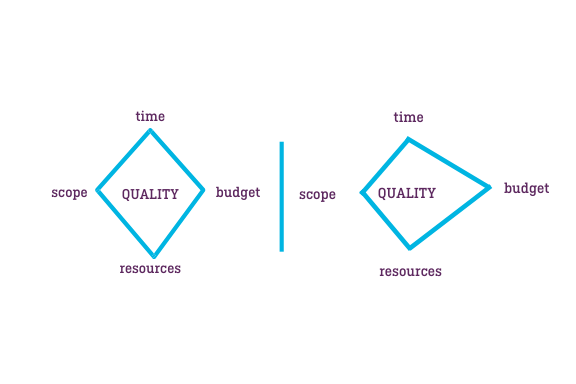What’s a project--and what does it mean to “manage” it?
Back to overview-
Digital Marketing
Can anything be a project? When it comes to project management, there are clear definitions to what encompasses a project, and exactly what it takes to manage one.
First off, what exactly is a project?
The word project is used in many ways to mean many things, but when it comes to Project Management, it does have a clear definition. According to the Project Management Institute (PMI), a project is “a temporary endeavor undertaken to create a unique product, service or result”. It is something outside of normal operations and is non-routine.
A project is a journey; it follows the path to reach a new goal (the what that all actions are moving toward achieving). There is a beginning and at a certain point, an end to the journey (the when factor that must be controlled). Of course, you’ll need people, money, and infrastructure in order to arrive to your final result. These variables are very important, and classified as resources.
Putting the what and when together, applying the appropriate resources, and keeping the journey moving in the right way: this is the how. This “how” is what we call project management. You can look at a map and realize where your destination is, but how will you arrive? Every journey is different, and the route will be dictated by the goal, timeline, and the resources available. The project manager plays a crucial role in making sure the journey is the right one, and that everything stays on track.
Getting started
To get started with a project, specific elements must be defined. Failing to define these elements before beginning the project leaves you vulnerable to conflict later on, and this conflict could cause you to waste resources, overspend your budget, finish the project late, or even derail a project completely. So what are these critical elements? A project manager needs to keep the following characteristics into account for each project:
- Scope
The scope is the big picture of a project. It includes clearly defining the goals and objectives, as well as the size of the project, and any specific requirements that might be tied to the project. The scope also needs to take into account the other elements (time, resources, and budget)--meaning that any changes to the scope will affect these elements. If the scope was set to build one tower, and then changed to build two, the parameters of time, resources, and budget must also be reevaluated.
- Time
This refers to a determined start date and end date, but there are also many more factors of time which must be outlined. Each task or step inside the project must be laid out, and then a duration allotted for each one. Some tasks can happen simultaneously or have some overlap, but some tasks will be sequential, with one being impossible to begin or complete without another specific task having been started or completed. Some tasks will be fully independent of others, and can be completed at any time. Others will be extremely dependent and not flexible at all in when they are worked on. Planning the times and dependencies of all tasks is part of defining the time element of a project.
- Resources
Defining resources includes having a clear understanding of the people and materials involved. The people are the members of the team directly involved in the project, as well as other subcontracted staff or companies and suppliers. The skills and requirements of employees on the project must be controlled, as well as their use of other resources, time, and budget--and their understanding of the scope of the project and their role within it. A project manager may be directly involved with all employees or subcontracted workers, but often, they mainly deal with managers and technical directors.
- Budget
The cost of a project encompasses all monetary expenditures inside a project, including labor and material costs. Calculating this cost before the project begins is necessary, but it is of course an estimate. This means that there should be contingency costs built in or considered as well. This helps alleviate issues if there is an unexpected cost, like the price of raw materials suddenly rises. There is likely a profit goal from different tasks or whole projects, and this is also included in the budget. A project manager works to keep the costs from going over the budget, or even lowering them, and to maximize the profit.
Other characteristics
There are other characteristics worth valuing when defining a project. For example, how unique or innovative is this project? Does this bring value or challenge to the project, and in what ways? It is also wise to assess areas where you can encounter uncertainty. Keep these areas in mind later, and pay close attention to be ready to keep the project on the right path. Consider as well all the stakeholders involved: not just the team working on the project, but other parts of the company that might be implicated, and of course, the impact on your clients.
The quality of a project will be the balance of achieving the scope while respecting the timeline, resources and budget. Pulling too much or too little in one of these directions will require pulling away from another: If a project goes way over the budget, then for example, the team may not be able to fully reach the goals outlined in the project scope. The project manager is responsible for the quality of the final result of a project.





